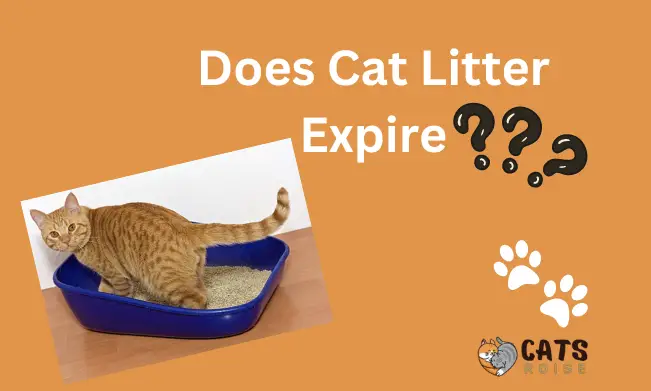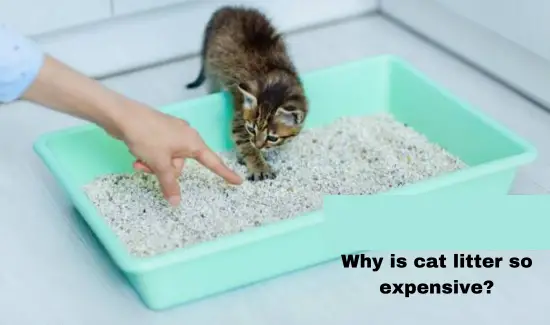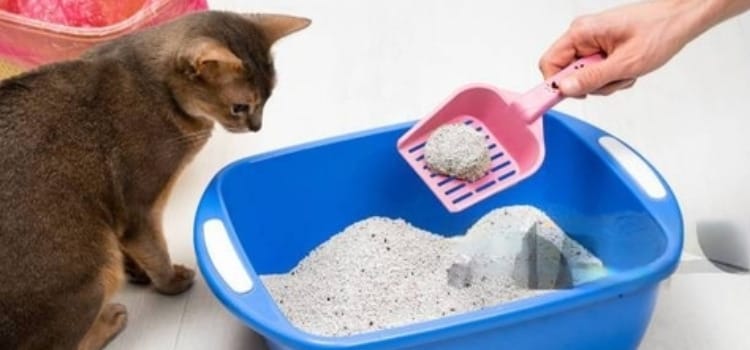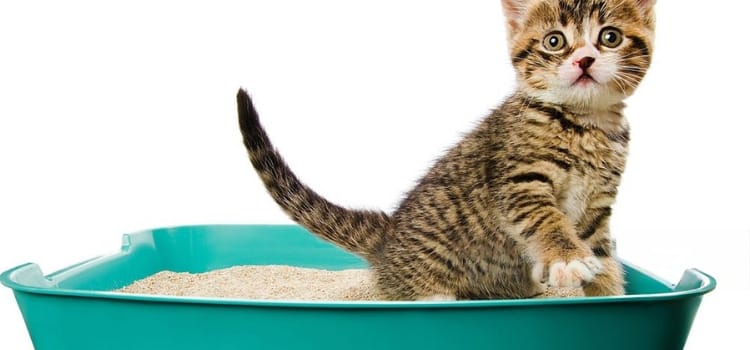We are calling all feline enthusiasts! We love our furry friends, but let’s face it – dealing with cat litter can be quite the challenge. From clumping to non-clumping, scented to unscented, countless options exist.
But what about when it comes time to dispose of that used litter? Fear not, because today, we have you covered! In this blog post, we unveil the secrets of the best way to bid farewell to your kitty’s waste while keeping your home clean and odor-free. Get ready for efficient tips and eco-friendly solutions to revolutionize your litter disposal routine!”
Introduction To The Importance Of Proper Cat Litter Disposal:
Proper cat litter disposal is an essential part of responsible pet ownership. As a cat owners, we are responsible for keeping our furry companions healthy and safe, including properly disposing of their waste. Many people may think that disposing of cat litter is a simple task, but it requires more care and attention than we realize. This section will discuss the importance of proper cat litter disposal and why it should be taken seriously.
1. Environmental Impact:
One of the main reasons why proper cat litter disposal is crucial is its potential environmental impact. Traditional cat litter is made from clay or silica-based materials that are non-biodegradable and can take hundreds of years to decompose. When improperly disposed of in landfills, these litters can contaminate groundwater and release harmful chemicals into the environment.
Moreover, many commercial cat litter also contain added fragrances and chemicals that can harm wildlife when they make their way into natural habitats through improper disposal methods. This not only affects animals but also disrupts the delicate balance in ecosystems.
2. Health Risks;
Improperly disposing of cat litter can pose health risks to humans and cats alike. Cat feces contain a parasite called Toxoplasma gondii, which can cause severe illness in humans if ingested or inhaled through contaminated air particles. This parasite can also be transmitted to other animals, especially pregnant.
The environmental impact of improper disposal
The improper disposal of cat litter can significantly impact the environment. Cat litter comprises various materials, including clay, silica, and plant-based substances, which can harm the environment if not disposed of properly.
One major issue with improper disposal of cat litter is the contamination of water sources. When cat waste and used litter are thrown into the trash or flushed down the toilet, they end up in landfills or sewage treatment plants. This can release harmful bacteria and parasites into rivers, lakes, and oceans. These contaminants can negatively affect aquatic life and threaten human health if ingested.
Moreover, clay-based litters contain sodium bentonite, a highly absorbent material that expands when it comes into contact with water. If this type of litter is disposed of improperly, it can clog pipes and disrupt water flow in sewage systems. This not only causes inconvenience but also leads to expensive repairs for municipalities.
Another environmental concern related to improper disposal is air pollution. Some types of cat litter may contain chemicals or fragrances that release volatile organic compounds (VOCs) when exposed to oxygen. These VOCs contribute to air pollution and can irritate respiratory systems in humans and animals.
Furthermore, when cat waste ends up in landfills and other household garbage, it produces methane gas as it decomposes. Methane is a potent greenhouse gas that contributes significantly to climate change.
Traditional Methods Of Disposing of Cat Litter And Its Impact On the Environment:
Traditional methods of disposing of cat litter have been in practice for years and involve either flushing it down the toilet, throwing it in the trash, or burying it. While these methods may seem convenient and easy, there are specific considerations to consider before choosing a disposal method for your cat’s litter.
1.Flushing:
This is a frequent can you flush cat litter down the toilet, and flushing cat litter is a common practice among cat owners. However, this method is not recommended as it can cause major plumbing issues.
Cat litter comprises materials that do not easily break down in water, such as clay, silica gel, or crystals. These materials can clog pipes and cause damage to septic tanks and sewage systems.
Additionally, some types of cat litter contain chemicals harmful to marine life if they enter rivers or oceans through sewage systems.
2.Throwing in the Trash:
Rowing cat litter in the trash may seem like an easy solution, but it also has drawbacks.
Cat feces contain bacteria, parasites, and other pathogens that can spread diseases to humans and other animals if not disposed of properly. These pathogens can also contaminate soil and groundwater when they end up in landfills, posing a risk to public health.
Most municipal waste management facilities do not accept pet waste due to health concerns and environmental regulations. This means that your regular household trash bin is not an ideal place to dispose of cat litter as it will end up in a landfill where it does not decompose appropriately due to lack of oxygen.
3.Burying:
Burying cat litter in your backyard is a natural solution since cats naturally bury their waste outdoors. However, this method poses potential health risks for humans and other nearby animals.
4. Composting:
Composting is a natural process where organic materials break down into nutrient-rich soil. This method not only helps in reducing waste but also provides a healthy soil amendment for gardening purposes. To compost cat litter, you need a dedicated compost bin or pile away from edible plants and water sources.
Firstly, choose an appropriate type of litter that is safe for composting, such as biodegradable wood pellets or paper-based litter. Avoid using clay-based litter as they do not break down easily.
Next, scoop out the solid waste from the litter box daily and add it to your compost bin and other organic materials like food scraps or yard waste. The nitrogen-rich cat waste will act as an activator in the decomposition process.
Maintaining the right balance of carbon (brown) and nitrogen (green) materials in your compost pile is essential to ensure proper decomposition.
Add more browns like dry leaves or shredded newspaper if you notice any foul smell or excess moisture in the bin.
After a few months, you will have nutrient-rich compost ready to use in your garden beds while reducing environmental impact.
Step-By-Step Guide On How To Compost Cat Litter:
Composting is a great way to dispose of your cat’s litter in an environmentally friendly manner. It reduces waste and creates nutrient-rich soil for gardening and landscaping purposes.
However, composting cat litter requires proper knowledge and technique to ensure it is safe for the environment and human health. Follow these steps to compost your cat litter effectively:
Step 1: Choose the Right Type of Cat Litter:
Not all types of cat litter are suitable for composting. Clay-based litter, for example, should never be used as they do not decompose well and can contain harmful chemicals. Instead, use natural alternatives such as pine pellets, wheat, or corn-based litter.
Step 2: Prepare Your Composting Bin:
Select a large enough bin with a solid lid to prevent unwanted animals from entering the compost. You can purchase a particular composting bin or use an old trash can with holes drilled in it for ventilation.
Step 3: Layer Your Composting Bin:
Start by adding a layer of dry materials like leaves or shredded paper at the bottom of your bin. This will help absorb moisture and allow air circulation within the compost.
Next, add a layer of cat litter (about an inch or two). Make sure to spread it evenly without creating clumps.
Step 4: Add Green Materials:
Green materials such as fruit and vegetable scraps or grass clippings are used to compost cat litter.
Other creative ways to repurpose used cat litter (deodorizer, garden fertilizer)
Although disposing of used cat litter may seem daunting, there are many creative ways to repurpose it instead of simply throwing it away. Not only does this help reduce waste and benefit the environment, but it can also save money on purchasing other products.
Repurpose Used Cat Litter With deodorizer:
One common issue with used cat litter is its pungent odor. However, instead of purchasing expensive deodorizers, you can reuse your cat litter as a natural deodorizer for various areas in your home.
Fill an old sock or pantyhose with some used cat litter and tie it off. Place these homemade deodorizers in closets, shoes, or even the fridge to absorb unwanted smells.
Repurpose Used Cat Litter By Garden Fertilizer:
Another great way to repurpose used cat litter is by using it as a garden fertilizer. Cat feces contain high levels of nitrogen and other essential nutrients that plants need to thrive. However, please note that this method is only suitable for outdoor plants and should not be used in edible gardens.
To use cat litter as fertilizer, mix one part of used clay-based litter (non-clumping) with two parts compost or soil and add it around the base of your plants. This will provide them with nutrients and help retain moisture in the soil. Just be sure to choose a low-dust formula and avoid using scented litter that may harm your plants.
Additionally, if you have an outdoor compost bin, adding small amounts of used clumping cat litter can help speed up the decomposition process.
Tips for Disposing of Cat Litter:
Proper disposal of cat litter is crucial for the health and hygiene of your home and the environment. The wrong disposal methods can lead to pollution, spread of diseases, and harm to wildlife. Here are some tips to ensure you dispose of your cat litter as best as possible.
- Use Biodegradable or Flushable Litter:
The first step in proper disposal is choosing an environmentally friendly litter option. Biodegradable or flushable litter is made from natural materials such as corn, wheat, or pine that can easily break down into organic matter once disposed of. These types of litter are safe to flush down the toilet or dispose of in your compost bin.
1. Scoop Daily:
To avoid accumulation and unpleasant odors, it’s important to scoop out your cat’s waste daily. This will prevent bacterial growth and keep your cat’s litter box clean and hygienic.
2. Use a Dedicated Trash Can:
It’s important not to mix cat litter with other household garbage as it can contaminate other waste materials.
Keep a separate trash can specifically for disposing of used cat litter, and make sure it has a tight-fitting lid to prevent any odors from escaping.
3. Double Bag:
When disposing of soiled clumps or bags containing used litter, always double-bag them before throwing them away in the trash bin. This will help contain any odors and prevent leakage while being transported.
Conclusion:
Overall, it is crucial to dispose of cat litter responsibly and safely. By following these tips, you can ensure your home stays clean and healthy for you and your beloved feline friend.
Always scoop regularly, use biodegradable materials, and properly dispose of the waste in designated areas. By taking these simple steps, you are maintaining a hygienic living space and being mindful of the environment. Your furry companion will thank you f
We are calling all feline enthusiasts! We love our furry friends, but let’s face it – dealing with cat litter can be quite the challenge. From clumping to non-clumping, scented to unscented, countless options exist.
But what about when it comes time to dispose of that used litter? Fear not, because today, we have you covered! In this blog post, we unveil the secrets of the best way to bid farewell to your kitty’s waste while keeping your home clean and odor-free. Get ready for efficient tips and eco-friendly solutions to revolutionize your litter disposal routine!”





[…] To grasp the reasons behind the potentially high cost of cat litter, it’s essential to delve into the various types and brands offered in the market. Exploring these options can shed light on the factors influencing pricing. Now, regarding the best method for disposing of cat litter… […]
Thank you soo much